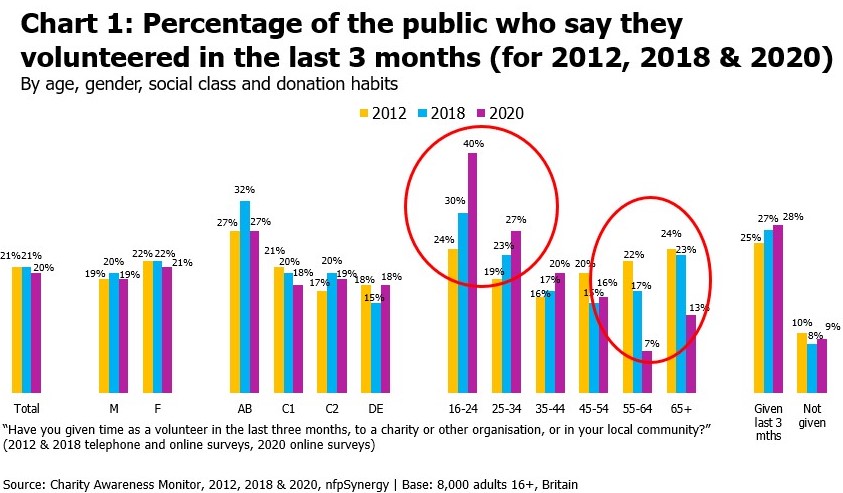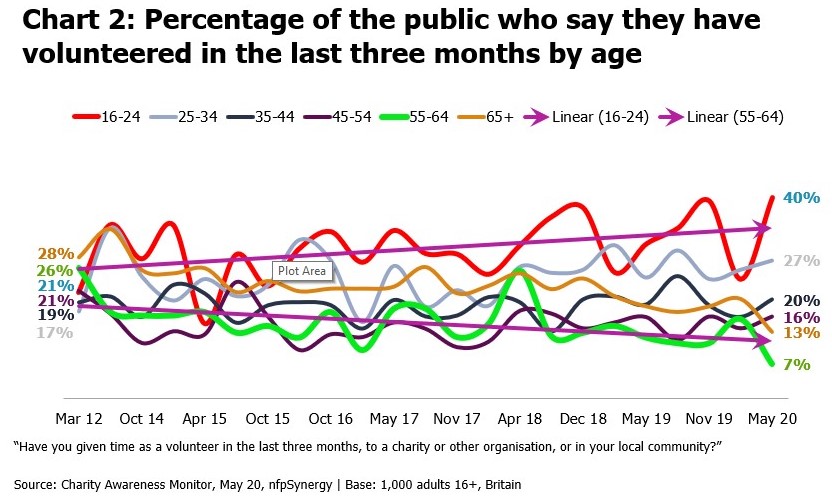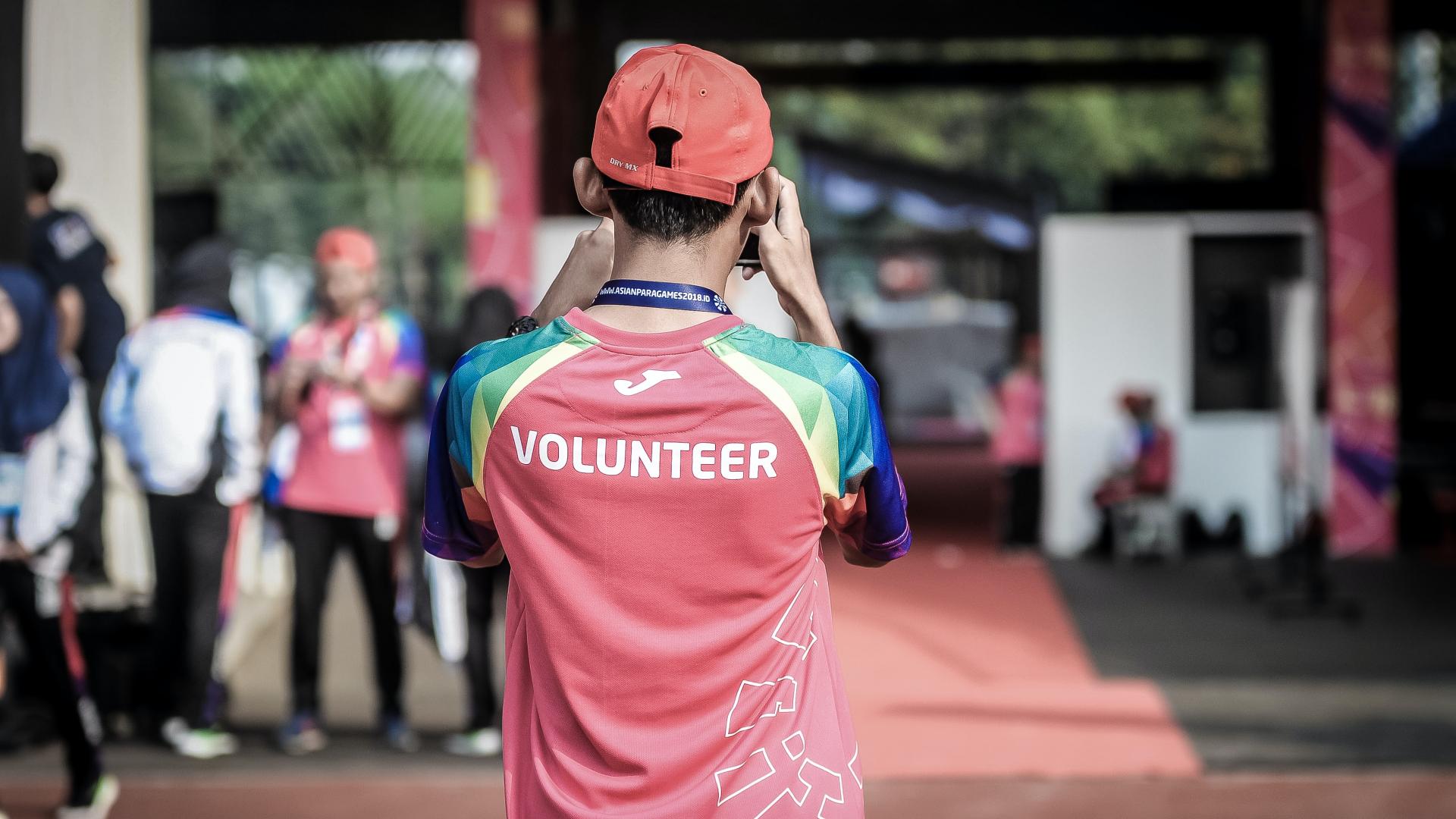It should come as no surprise to note that volunteering trends have seen a few relatively dramatic changes in light of the Covid-19 pandemic. nfpSynergy has been monitoring volunteering levels every quarter since 2012 and so adding some contextualisation to our latest findings proves especially interesting.
Key Takeaways
As Chart 1 shows, in general, volunteering rates have stayed constant since 2012 with around 1 in 5 saying they have volunteered in the last 3 months. There are few fluctuations across gender, social grade, or based on whether one is a donor or not.

By far the largest determinant affecting volunteering rates over the last decade or so is age. In fact, for those aged 55 and above, volunteering rates have dropped by about by 10% since 2018, with on average 1 in 10 saying they have volunteered in the last three months. Covid-19 has a large part to play in all of this of course as elderly people are self-isolating more strictly than other age groups.
Volunteering rates amongst the under 30s have however dramatically increased. The percentage of those saying they have volunteered in the last three months has increased from 30% up to 40% from 2018-2020. Again Covid-19 will surely have had a significant impact on this with many responding to the NHS call for volunteers, or other local ‘mutual aid’ and voluntary schemes.
A Look at Long-term Trends
None of the above is necessarily that surprising, but what is perhaps most interesting to note is that these figures corroborate rather than challenge the longitudinal trends in volunteering rates. As Chart 2 shows, whilst in 2012 the older age groups outstripped the youth for levels of volunteering, that trend has steadily been reversed suggesting that Covid-19 has merely exacerbated an existing trend rather than restructured the landscape of volunteering.

With the youth, there seems to be a somewhat cyclical nature to volunteering rates each year, most likely affected by the summer months drawing a larger cohort of young volunteers to festivals and summer projects. It is also very plausible that volunteering rates could be on the increase as schools and universities generally are becoming increasingly encouraging of such a vocation. Securing a place at university or future employment is only aided by having some sort of volunteer experience and so potentially this is causing the upsurge.
With the elderly, the causes are less clear. The immediate downturn is no doubt due to Covid-19 but discerning the causes behind the longer-term decline is somewhat more difficult and could ultimately be based on a myriad of contributing factors.
Looking Forwards
The older population has historically been a key pillar of the volunteering community and so it is undoubtedly a shame to see them take a forced, and relatively collective, step back from their pivotal societal role. Unfortunately, the uncertainty that surrounds Covid-19 and the inability to predict when we’ll emerge into a post-pandemic landscape means it’s especially difficult to forecast when we might see an upsurge in volunteering rates amongst the elderly.
Amongst the youth, there is more room for positivity. With youth volunteering rates generally on the incline over the past decade and with the new Covid-19 climate of mass volunteering, perhaps we might witness the inculcation of a new mindset amongst the younger generations in which volunteering becomes part of the norm.
Making sweeping predictions about the future within the current climate is undoubtedly foolish - yet there seem to be a few signs to suggest we can nurture some tentative optimism.

